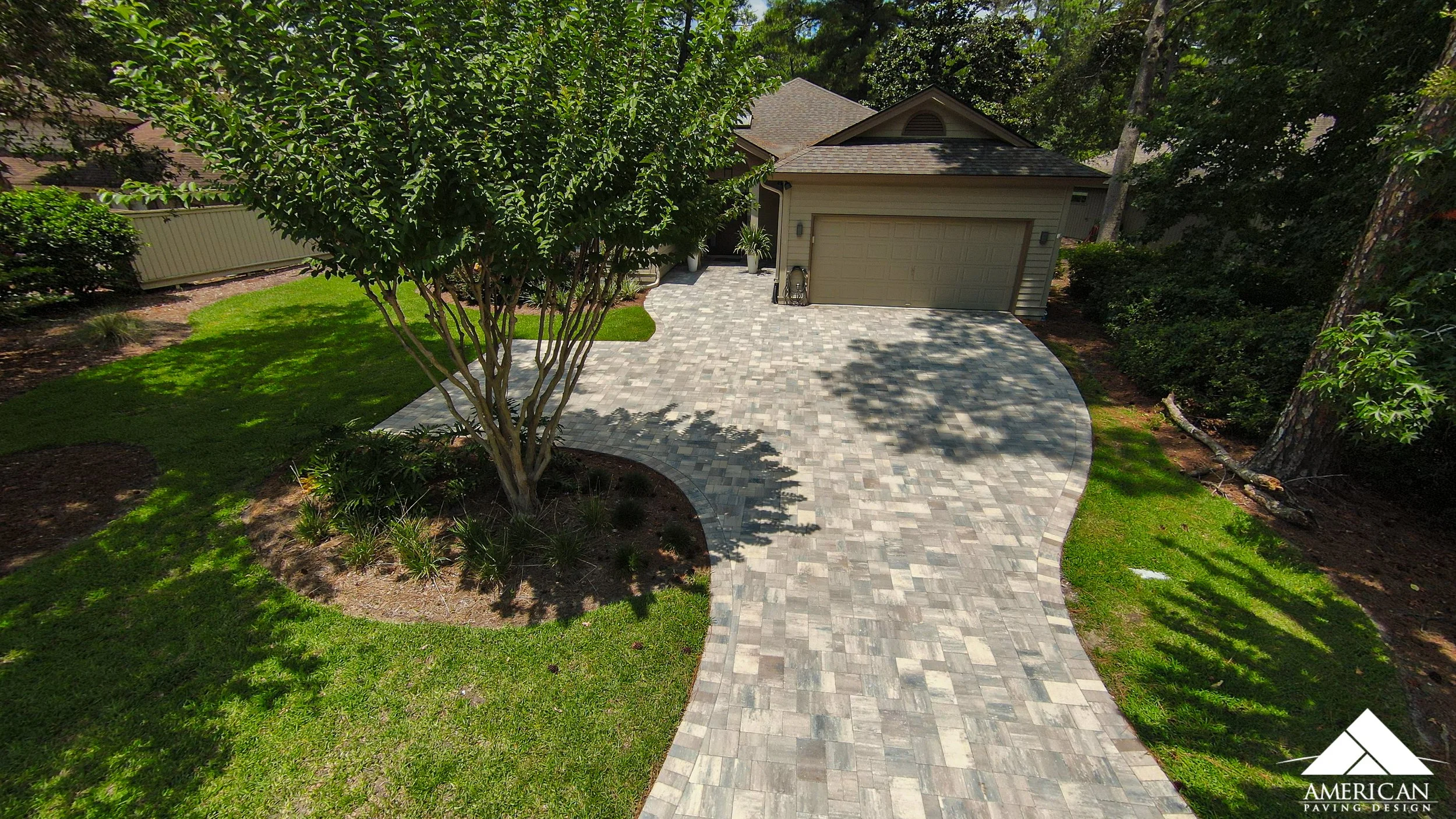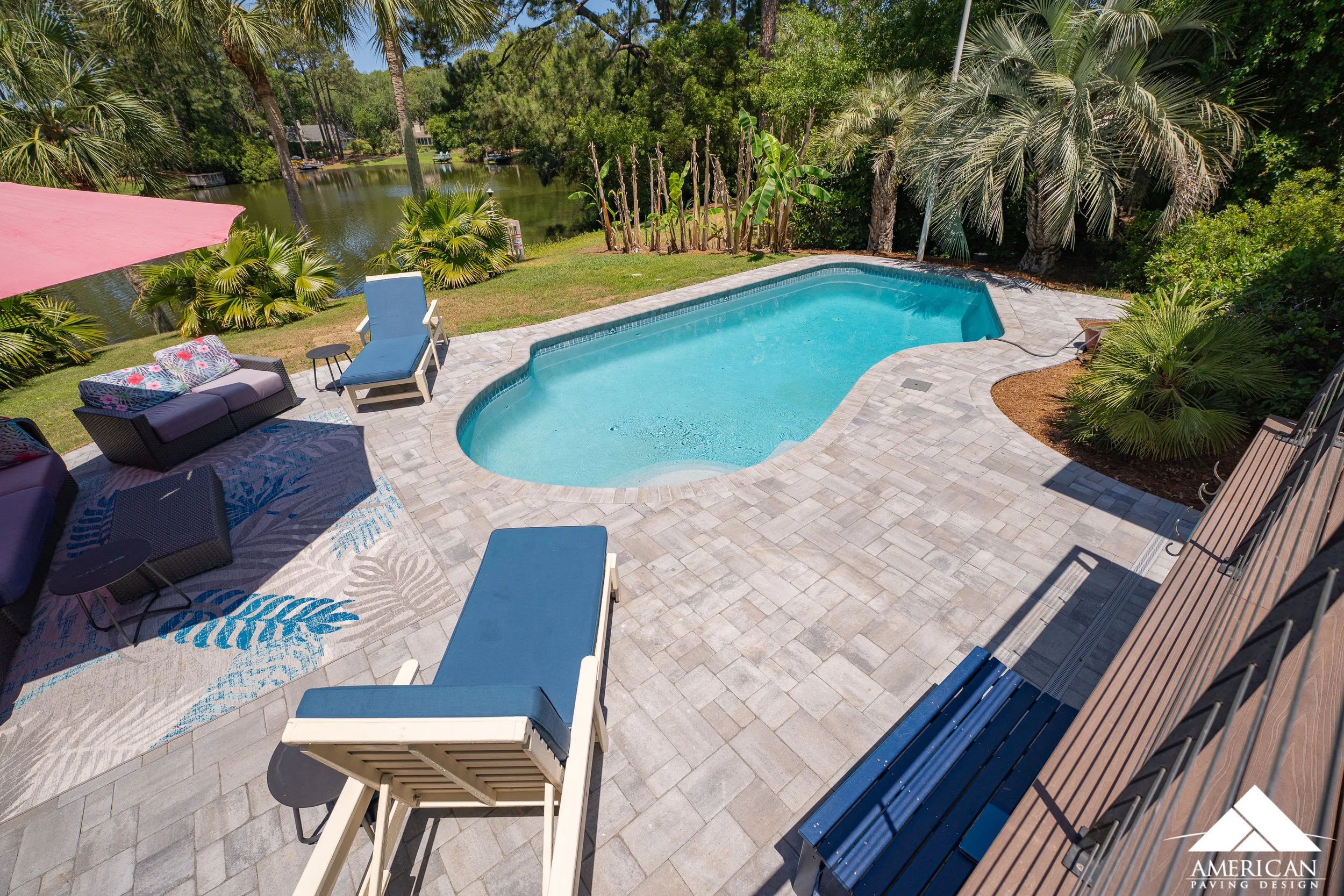Paver Design Trends 2025: Inspiration for Bluffton, Hilton Head & Beyond
Bringing Trends to Life in the Lowcountry
Tailor to climate: In South Carolina and Georgia, your paver choices matter — heat absorption, slip resistance, and color retention are key.
Balance scale & detail: Use large slabs for expanses, but break them up with reveals, borders, or pattern accents to keep visual interest.
Run water, don’t fight it: Incorporate drainage channels, permeable zones, or channel drains hidden within paver joints.
Plan for longevity: Work with a contractor who understands local soil, grade, freeze cycles (if applicable), and salt exposure near the coast.
At American Paving Design, we monitor these trends closely so we can bring them into your project with practical expertise. Whether you want a serene garden retreat, a dramatic modern courtyard, or a high-performance pool deck, these design directions give you a starting palette. Let’s schedule a consult and turn your dream into a durable, beautiful reality.
Paver Design Trends 2025: Inspiration for Bluffton, Hilton Head & Beyond
If you’re planning a hardscape upgrade in the Lowcountry—Bluffton, Hilton Head, Savannah, or Charleston—2025 brings fresh direction for paver design. At American Paving Design, we aim to help homeowners combine beauty, durability, and sustainability. Here are top trends to watch, and how you can apply them to your next patio, driveway, or pool deck.
1. Large-Format Pavers Flatten the Visual Field
One of the biggest shifts is toward oversized paver units (e.g. 24″ × 24″ slabs in concrete, porcelain, or natural stone). These reduce visible joint lines and create a seamless, open feel — especially helpful in smaller outdoor areas. The clean look aligns beautifully with modern architecture or minimalist gardens.
2. Warm, Earthy Color Palettes Make a Comeback
While cool greys remain popular, clients are increasingly drawn to creams, sandstones, taupes, and terracotta tones — colors that echo the coastal soils, marsh grasses, and historic brick in the Lowcountry. These palettes offer a softer, more natural aesthetic that still complements traditional and contemporary homes alike.
3. Mixed Textures & Material Pairings
2025 is all about layering: imagine combining smooth porcelain pavers with cobblestone accents, travertine inlays bordered by granite, or placing permeable pavers next to solid surfaces for interest and function. This approach breaks monotony and tailors each zone to its use (dining, walkway, planter).
4. Eco-Friendly & Permeable Systems Take Center Stage
Sustainability is no longer a trend — it’s a requirement, especially in flood-prone and coastal zones. Permeable pavers, grass-grid systems, and open-joint installations let rainwater recharge the soil instead of flooding storm drains. Many municipalities now favor — or even require — these systems in new construction or renovations.
5. Outdoor Living as an Integrated Experience
Pavers are no longer just floor materials. Today’s designs seamlessly fold in fire pits, built-in seating, inset lighting, outdoor kitchens, and planter walls. The idea is to create zones for lounging, cooking, socializing, and dining — all unified visually by the paving beneath.


